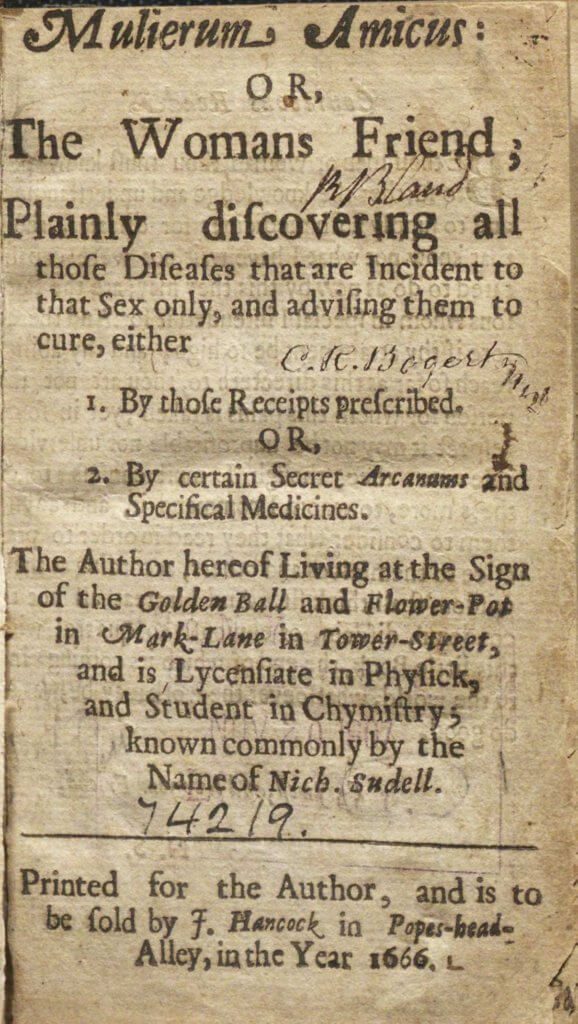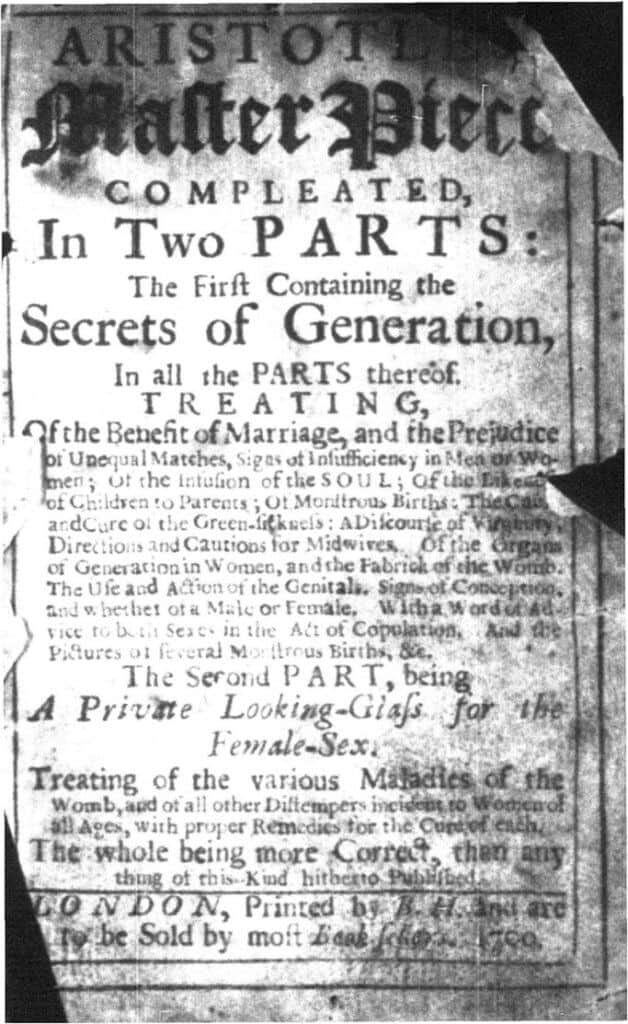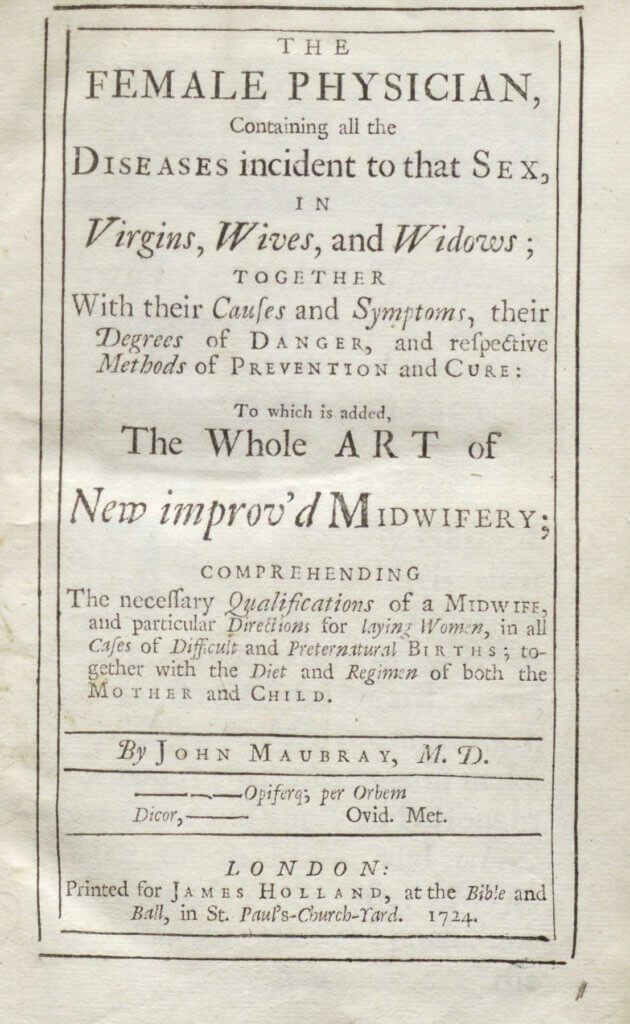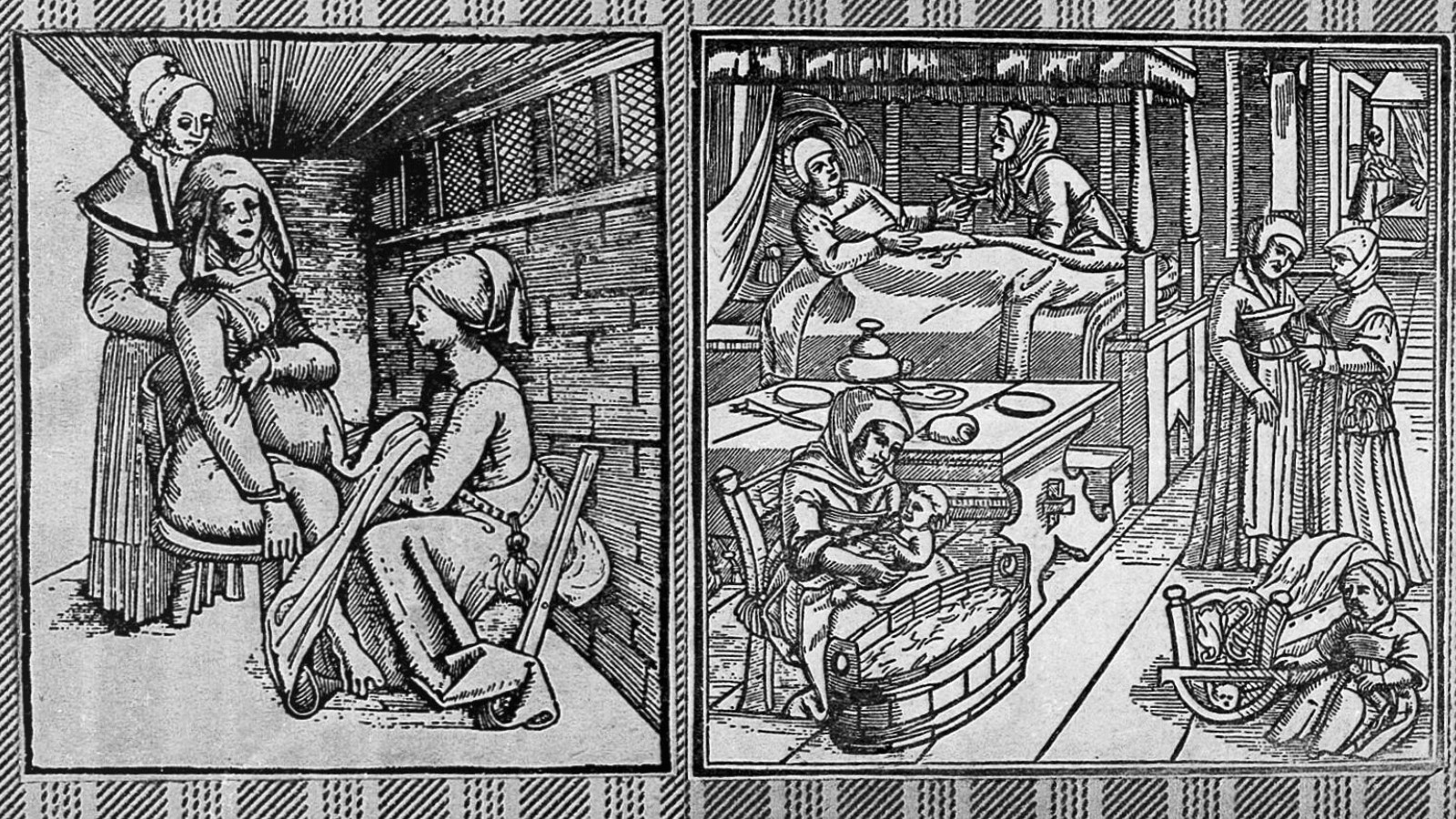│By Georgia Winrow, Gale Ambassador at Lancaster University│
Whilst we may think of how diseases such as the bubonic plague, typhoid or tuberculosis were discussed when studying medicine in early modern Europe, we often do not consider how significantly understandings of sexual and reproductive health developed during this period. The specialism of women’s health in particular was firmly established in these years, with the publication of manuals and treaties to direct physicians and midwives in their practice. Indeed, whilst the early modern period saw practitioners drawing upon the work of ancient authorities, it was also a period of innovation, particularly within science and medicine.
Gale’s Sex and Sexuality, Sixteenth to Twentieth Century collection is truly interdisciplinary and includes materials that would support academic fields as varied as Sociology, Law and Theology. For scholars investigating the History of Medicine, the most significant materials within this collection which can be used to explore the emergence of a comprehensive, gendered understanding of early modern medicine are arguably the medical enquiries, manuals and pamphlets.
Privileged women were advised to educate themselves on female medicine
The early modern period saw the publication of new medical treatises written to address women’s health and medicine. Despite the low rates of literacy amongst most women of this period, privileged women often could read and were quite frequently the intended reader of such medical texts. Indeed, male authors commonly recommended that women educate themselves on the anatomy and bodily functions specific to their sex. One such example of this is Nicholas Sudell’s 1666 publication, Mulierum Amicus: or, The Woman’s Friend, addressed to ‘the Noble Ladies and Gentlewomen, Wives to the Right Worshipful Knights and Gentlemen’.

The areas of focus in treatises like Sudell’s were the female anatomy, and diseases specific to the female body such as ‘Inflammations… Cancer’ and conditions specific to women such as ‘Barrenness… Abortion or miscarriage’ and ‘Acute diseases of women in childbed’. Sudell is clear in the preface that his work is ‘not fit to be presented to all persons’, but that it should demonstrate that women and female conditions ‘stand distinct from man’. Sudell’s treatise intended to educate women and ‘further [their] knowledge’ as he demonstrates the common symptoms, causes and most importantly the treatments and medicines for a selection of ailments.
Women held community-based, unorthodox medical roles
The desire to teach women how to ‘compound medicines’ and how to apply remedies to other patients is reflective of the female role in early modern medicine: whilst men commonly occupied the role of physician, apothecary, or surgeon (and often held more than one role at once), women were dubbed wise-women or cunning folk, and took on community-based, unorthodox roles. This meant that they would often pass along remedies orally and would have been more involved in the practice of medicine than written records would suggest.
Masterpiece Completed in Two Parts by a Pseudo-Aristotle (an unknown author falsely claiming to be Aristotle) from c. 1700 is taken from ‘Sex Research: Early Literature from Statistics to Erotica from the Kinsey Institute’, one of the three collections in Sex and Sexuality, Sixteenth to Twentieth Century. This collection, compiled in the twentieth century, consists of texts predominantly from the seventeenth to the twentieth centuries and aimed to review contemporary attitudes towards human sexuality, and how those attitudes altered over time.
In Masterpiece Completed in Two Parts, the author addresses the importance that women are able to recognise diseases specific to the female body for ‘they neither know from whence it proceeds, nor how to apply a Remedy’. Drawing on the authority of Cicero, Aristotle outlines that knowledge of female biology and medicine is paramount, since matters concerning the womb can have a fatal impact in the health of ‘the Heart, the Liver, and the Brain’.

The importance placed upon body heat
At the heart of this treatise, like others of the period, the central concern is the female reproductive system, principally ‘the Womb… or Matrix’, understanding the ‘courses’ or menstruation, and the process of childbirth. The female anatomy was considered to be virtually identical to the male counterparts in the early modern period but was simply an imperfect version, dependent on the heat of the body: whilst the male anatomy was displayed outwardly as a result of the male body’s greater heat, the female equivalent was inverted within the body, since the female body was colder. The author also provides a detailed account in Chapter II of this treatise of how and when to perform copulation in order to create a male or female child, and how to achieve the ‘perfect Birth’. This, again is heavily dependent on the heat of the body, since ‘the heat of the Womb is greater in producing the Male than the Female’. This heat is a key component of the humoral theory of the body.
The humoral body
The foundations of medicine and bodily anatomy in early modern Europe were understood in terms of the humoral system, an ancient system developed by Galen. This relied on the balance of four biles within the body, each responsible for assigning different behavioural traits. An imbalance could result in disease or illness. For instance, an internal imbalance in favour of black bile could result in increased melancholy, whereas excess red bile, or blood, resulted in a sanguine temperament. This system, which provided the basis for early modern medicine, was understood explicitly in terms of gender, and gender differences; women were understood to contain predominantly wet and cold humours, compared to men who were dry and hot.
‘The Virgin-Disease’
Since the internal composition of men and women was different, their ailments should also be treated accordingly. John Maubray’s treatise, The female physician, containing all the diseases incident to that sex, details an ailment called ‘The Virgin-Disease’, which affects the function of the ‘Liver, Spleen, or Ventricle’ as a result of irregular menstruation. The main cause, however, is listed ‘a Collection of deprav’d crude Humours in the Body’. If left untreated ‘the Humours fly into the Head’ which ‘causes a Frenzy’.

‘The Virgin-Disease’ was clearly a significant ailment for early modern women, since this condition is also referenced as one of the first conditions in Sudell’s treatise mentioned above. Sudell lists paleness of the face and body, as well as the ‘Swelling face and Eye-lids’ amongst the symptoms. It was thought the key to curing this disease lay in clearing the obstructions in the bloodstream, through a series of purges and a concoction of herbal remedies such as ‘Salt of mugwort’ and ‘Conserve of red Roses’. Today, ‘The Virgin-Disease’, otherwise known as ‘Green-sickness’ or ‘the White feaver’, is understood as jaundice, but the assessment of such an illness in the early modern period was solely reliant on humoral theory.
Digital Humanities search tools
Using Gale’s Term Frequency search tool, it is possible to identify the frequency with which certain terms relating to female reproductive health were used in documents between 1650 and 1750, in relation to the number of documents this collection contains published that year. The graphs below show the Frequency of the terms ‘womb’, ‘childbirth’, ‘midwife’ and ‘matrix’, an early modern term referring to the female sexual organs. Whilst the popularity of such terms appears to decrease over time (so far as occurring in a smaller percentage of documents), I would argue that this can be attributed to the fact that there are more documents contained within the collection from later in the early modern period. It is also interesting to note that, whilst admittedly the numbers are small in terms of documents published each year contained in this collection, a high percentage of documents contain at least one hit on at least one of these search terms.

A transformative period – but centuries from true body autonomy
Whilst the early modern period was undoubtedly transformative in terms of how women’s sexual and reproductive health was perceived within the general populace, the scholarship which facilitated this transformation was written almost exclusively by men. It would be centuries before women were able to claim any true autonomy over their bodies. Indeed, disputes surrounding bodily autonomy are still relevant today in debates on abortion rights, amongst other issues.
Gale’s Archives of Sexuality and Gender contains a whole host of documents which can be utilised to track the progression, not only of women’s health, but of other groups, topics and issues, right through to the twenty-first century.
If you enjoyed reading about early modern views of sexual and reproductive health, why not explore:
- Birth Control: A History in Women’s Voices
- How Gale’s Archives Supported My Thesis on the Politics of Contraception in South Africa, 1970s–80s
- The Author Gender Limiter Tool Brings Exciting Potential to the Study of Women’s Authorship and Digital Humanities
- A Male Contraceptive Pill – could this bring greater gender equality?
- Etiquette and Advice, 1631-1969 – Good Manners as Prescribed by “Polite Society”
- L’Enfer de la Bibliothèque nationale de France – A Student’s Perspective
- Exploring Twentieth-Century Art and Social History in Erotica from L’Enfer de la Bibliothèque nationale de France
- Exploring Early Modern Erotica and Social History in L’Enfer de la Bibliothèque nationale de France
- Sex! … and Sexuality, and Gender
Blog post cover image citation: Obstetrics: midwife assisting in a birth, Original woodcut image from E. Roeslin, Rosengarten, 1513, Wellcome Collection, https://wellcomecollection.org/works/dhgnmcdu (lightly edited)


